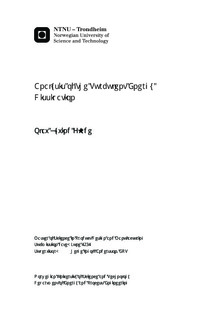| dc.description.abstract | An investigation of the turbulent fluctuating kinetic energy dissipation in low Reynolds number channel flow is made, both analytically and numerically with means of Direct Numerical Simulation (DNS). The unsteady Navier-Stokes equations are solved at a Reynolds number of 360, based on the shear velocity and channel height, for four grid resolutions 48^3, 88^3, 128^3 and 192^3. The results are compared with data from Kim et al. (1987) [9], and good agreement is found for the 192^3 grid resolution.The viscous term in the kinetic energy equation is derived and described, from there the isotropic dissipation equation is shown to be the homogeneous dissipation equation which is compared with the thermodynamically correct dissipation. The results are in agreement with the findings of Bradshaw and Perot (1993) [2], with a difference of maximum ≈2.5% from the correct dissipation.The isotropic dissipation, often used as approximation in experiments, is also calculated and compared with the homogeneous dissipation. The results are un- surprisingly poor, and are only in agreement about the centerline. A comparison with an equation from the k-ε-model is also made, most as a curiosity, and also shows poor agreement.The Kolmogorov length scale is calculated from the dissipation, and it shows clear grid dependency even though the grid is smaller than the Kolmogorov length scale in the z-direction with max(∆z+/η+) = 0.8. The dissipation of the Reynolds stress components are used to create Kolmogorov length scales in x, y and z-direction. They are also grid dependent, even though max(∆z+/η+ ) ≈ 0.7. A length scale tensor analogous to the Kolmogorov length scale is proposed. It is based on the connection between the Reynolds stress equation and the turbulent fluctuating kinetic energy equation. It relaxes the grid restrictions compared to the Kolmogorov length scale, but investigation of its validity requires simulations with a super computer and is therefore not performed. | nb_NO |

